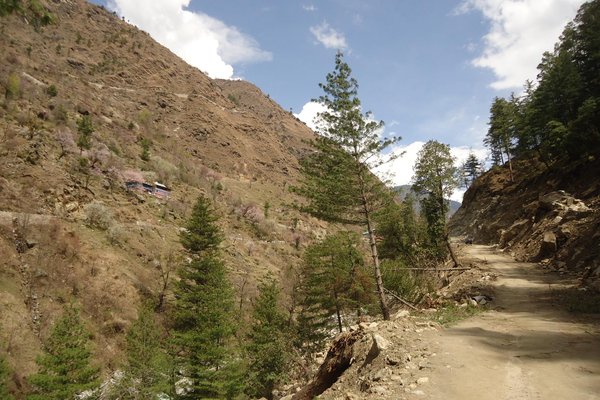India
Great Himalayan National Park
The Great Himalayan National Park Conservation Area is an undisturbed habitat in the ecologically distinct Western Himalayas.
The conservation area covers Great Himalayan National Park plus the Tirthan and Sainj Wildlife Sanctuaries. Its high-altitude forests and alpine meadows hold diverse flora with the greatest concentration of medicinal plants known for all of the Himalayas. It is the habitat of globally threatened mammals such as Snow Leopard and Himalayan Brown Bear, and globally threatened birds including the Western Tragopan pheasant.
Community Perspective: Jarek is the only reviewer so far, having reached the core zone and providing practical information.
Site Info
Official Information
- Full Name
- Great Himalayan National Park Conservation Area (ID: 1406)
- Country
- India
- Status
-
Inscribed 2014
Site history
History of Great Himalayan National Park
- 2014: Inscribed
- Inscribed
- 2013: Referred
- Type
- Natural
- Criteria
- x
Links
- UNESCO
- whc.unesco.org
- Official
-
- greathimalayannationalpark.org — Great Himalayan National Park
- Related
-
- greathimalayannationalpark.com — Friends of the Great Himalayan National Park
All Links
UNESCO.org
- whc.unesco.org — whc.unesco.org/
Official Website
- greathimalayannationalpark.org — Great Himalayan National Park
Related Resources
- greathimalayannationalpark.com — Friends of the Great Himalayan National Park
Community Information
- Community Category
- Natural landscape: Mountain
Travel Information
Recent Connections
-
Golden jackal
Great Himalayan NP nom file lists the j…
-
Plant WHS not in a CPD
"The Great Himalayan National Park Cons… -
Inscribed on a single criterion only
X
Connections of Great Himalayan National Park
- Geography
- Trivia
-
-
Greatest Altitude Variations
"Starting from an altitude of 1,700 metres above mean sea level, the highest peak within the park approaches almost 5,800 metres" (Nom File pdf page 275)
-
- Ecology
-
-
Bears
Himalayan Brown Bear, Asiatic Black Bear -
Snow leopard
-
Golden jackal
Great Himalayan NP nom file lists the jackal among its mammals...in apps 2a and 12
-
- World Heritage Process
- WHS on Other Lists
-
-
Plant WHS not in a CPD
"The Great Himalayan National Park Conservation Area is home to 805 vascular plant species, 192 species of lichen, 12 species of liverworts and 25 species of mosses. Some 58% of its angiosperms are endemic to the Western Himalayas." (OUV) -
Biodiversity hotspot
Eastern Himalaya, Nepal
-
- Visiting conditions
-
-
No road access
Only on foot
-
News
No news.
Community Reviews
Show full reviews
Site visited recently - March, 2019.
As always in similar cases it is not easy to distinguish actual boundaries of Great Himalayan National Park (GHNP). On a road Aut - Banjaar, especially after passing Tirthan river I saw many posts suggesting that you are on the premisses of GHNP, but following the official map I think that park in this part starts only from Sairopa village located on Banjaar - Gushaini road. Reaching that place you are already in so called eco zone, but to reach core zone of GHNP you should go to Gushainin and take a 4-5 km trek from there (1,5 hours, one way).
At the beginning it a local road - take the one on the right side of the river, later on it is just a path (I didn't saw it on my mobile map, it is not also correctly shown on google maps). To reach the core zone of GHNP you should pass through 3 different hamlets (have in mind that it is easy to loose the correct way there as there are local paths to particular buildings). Boundary of GHNP is accessible after one hour hike, the first sign of national park is further kilometer ahead (Darakhali Point).
Unfortunately I did not have much time to have a bigger trek through mountains. There are agencies organising multi-day treks within GHNP. It can be done on the spot in villages (Banjaar, Saitropa, Gushaini). Any of the place can also serve as …
Keep reading 0 comments


